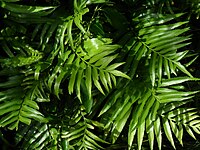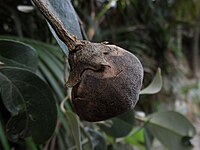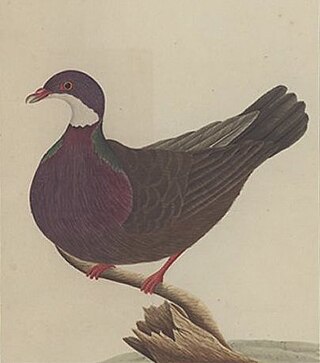From Wikipedia, the free encyclopedia
ഓസ്ട്രേലിയയ്ക്കും ന്യൂസിലാൻഡിനും ഇടയിലുളള തസ്മാൻ സീയിൽ കാണപ്പെടുന്ന അർദ്ധവൃത്താകൃതിയിലുള്ള ഒരു അഗ്നിപർവ്വത അവശിഷ്ടമാണ് ലോർഡ് ഹോവ് ദ്വീപ് ( Lord Howe Island) (/ haʊ /;മുമ്പ് ലോർഡ് ഹോവ്സ് ദ്വീപ് ). പോർട്ട് മാക്വറിയിൽ പ്രധാന ഭൂവിഭാഗത്ത് കിഴക്കോട്ട് 600 കി.മീ (370 മൈൽ), നോർഫോക് ദ്വീപിന്റെ തെക്ക് പടിഞ്ഞാറ് 900 കിലോമീറ്റർ (560 മൈൽ) ഈ ദ്വീപ് സ്ഥിതിചെയ്യുന്നു. ദ്വീപിന് ഏകദേശം 10 കി.മീ (6.2 മൈൽ) നീളവും 0.3 മുതൽ 2.0 കി.മീറ്റർ (0.19, 1.24 മൈൽ ) വീതിയിലും 14.55 ചതുരശ്രകിലോമീറ്റർ (3,600 ഏക്കർ) വിസ്തീർണ്ണത്തിലും, 3.98 ചതുരശ്രകിലോമീറ്റർ (980 ഏക്കർ) താഴ്ന്ന്കിടക്കുന്ന വികസിതഭാഗവുമായി ഉൾക്കൊള്ളുന്നു. [5]
 Satellite image of the island; north is up | |
 | |
| Geography | |
|---|---|
| Location | Lord Howe Island Group, Tasman Sea |
| Coordinates | 31°33′15″S 159°05′06″E |
| Total islands | 28 |
| Major islands | Lord Howe Island, Admiralty Group, Mutton Bird Islands, and Balls Pyramid |
| Area | 14.55 കി.m2 (5.62 ച മൈ) |
| Highest elevation | 875 m (2,871 ft) |
| Highest point | Mount Gower |
| Administration | |
| Administrative Division | Unincorporated area of New South Wales Self-governed by the Lord Howe Island Board[1] Part of the electoral district of Port Macquarie[2] Part of the Division of Sydney[3] |
| Demographics | |
| Population |
|
| Pop. density | 26.25 /km2 (67.99 /sq mi) |
| Additional information | |
| Time zone |
|
| • Summer (DST) |
|
| Official name | Lord Howe Island Group |
| Type | Natural |
| Criteria | vii, x |
| Designated | 1982 (6th session) |
| Reference no. | 186 |
| State Party | Australia |
| Region | Asia-Pacific |
Australian National Heritage List | |
| Official name | Lord Howe Island Group, Lord Howe Island, NSW, Australia |
| Type | Natural |
| Designated | 21 May 2007 |
| Reference no. | 105694 |
| File number | 1/00/373/0001 |
New South Wales Heritage Register | |
| Official name | Lord Howe Island Group |
| Type | State heritage (landscape) |
| Designated | 2 April 1999 |
| Reference no. | 970 |
| Type | Other - Landscape - Cultural |
| Category | Landscape - Cultural |
പടിഞ്ഞാറൻ തീരത്തിന് ചുറ്റുമായി മണൽഭാഗം പകുതി അടഞ്ഞരീതിയിൽ പവിഴപ്പുറ്റുകൾ കിടക്കുന്നു. വടക്കുകിഴക്കൻ ഭൂരിഭാഗവും ജനങ്ങളും തെക്കു ഭാഗം വനങ്ങൾ നിറഞ്ഞ മലനിരകളും ദ്വീപിന്റെ ഉയർന്നഭാഗത്ത് ഗോവർ പർവ്വതവും (875 മീ., 2,871 അടി) സ്ഥിതിചെയ്യുന്നു.[6]ലോർഡ് ഹോവ് ദ്വീപ് ഗ്രൂപ്പ് 28 ദ്വീപുകളും, ദ്വീപസമൂഹങ്ങളും പാറകളും ചേർന്ന് കാണപ്പെടുന്നു.[7]ഹോവിന്റെ തെക്ക് കിഴക്കായി 23 കി.മി ദൂരത്തിൽ (14 മില്ലീമീറ്റർ) ലോർഡ് ഹോവ് ദ്വീപിൻറെ ഭാഗമായി വളരെ ശ്രദ്ധയാകർഷിക്കുന്ന മനുഷ്യവാസമില്ലാത്ത അഗ്നിപർവ്വതസ്വഭാവമുള്ള ബാൾസ് പിരമിഡ് കാണപ്പെടുന്നു. വടക്ക് ഭാഗത്തായി കിടക്കുന്ന ഏഴു ചെറിയ ജനവാസമില്ലാത്ത ദ്വീപുകളുടെ കൂട്ടത്തെ അഡ്മിറൽട്ടി ഗ്രൂപ്പ് എന്ന് വിളിക്കുന്നു.[8]
1788 ഫെബ്രുവരി 17 ന് ലോഡ് ഹോവ് ദ്വീപിന്റെ യൂറോപ്യൻ സന്ദർശനത്തെക്കുറിച്ച് ആദ്യമായി റിപ്പോർട്ട് ചെയ്തത് ലഫ്റ്റനന്റ് ഹെൻറി ലിഡ്ജ് ബേർഡ് ബോൾ ആയിരുന്നു. സായുധ കപ്പൽ എച്ച്.എം.എസ് സപ്ലൈ കമാൻഡർ ബോട്ടണി ഉൾക്കടൽ വഴിയിൽ നോർഫോക്ക് ദ്വീപിൽ ഒരു പീനൽ സെറ്റിൽമെന്റ് കണ്ടെത്തിയിരുന്നു.[9]1788 മാർച്ച് 13 ലെ മടക്കയാത്രയിൽ ലോർഡ് ഹോവ് ദ്വീപിൻറെ തീരത്തേയ്ക്ക് ബാൾസ് ഒരു കക്ഷിയെ അയയ്ക്കുകയും ബ്രിട്ടീഷ് അവകാശവാദം ഉന്നയിക്കുകയും ചെയ്തു. [10]തുടർന്ന് ദ്വീപ് തിമിംഗിലവേട്ടക്കാർക്ക് കരാർ അടിസ്ഥാനത്തിലുള്ള ഒരു തുറമുഖമായിതീർന്നു. [11] 1834 ജൂണിൽ സ്ഥിരമാകുകയും ചെയ്തു[12]തിമിംഗില വേട്ട കുറഞ്ഞു വരുമ്പോൾ, 1880 നോടടുപ്പിച്ച് തദ്ദേശീയവൃക്ഷമായ കെൻഷിയ പാം ലോകവ്യാപകമായ കയറ്റുമതിക്ക് തുടക്കം കുറിച്ചു.[13] ഇത് ദ്വീപിന്റെ സാമ്പത്തിക മേഖലയിലെ ഒരു പ്രധാന ഘടകം ആയി തുടരുന്നു. 1945-ൽ രണ്ടാം ലോകമഹായുദ്ധം അവസാനിച്ചതിനുശേഷം മറ്റ് തുടർച്ചയായ വ്യവസായങ്ങൾ, വിനോദ സഞ്ചാരം എന്നിവ ആരംഭിച്ചു.
ആഗോള പ്രാധാന്യമുള്ള ഒരു ലോക പൈതൃക സ്ഥലമായി ലോർഡ് ഹോവ് ദ്വീപ് ഗ്രൂപ്പ് യുനെസ്കോ രേഖപ്പെടുത്തുന്നു.[14]ഈ ദ്വീപ് ഭൂരിഭാഗവും തീർത്തും വനമാണ്. ലോകത്തിലെ പലയിടങ്ങളിലുമുള്ള സസ്യങ്ങളും മൃഗങ്ങളും ഇവിടെയും കാണപ്പെടുന്നു. പ്രകൃതിദൃശ്യങ്ങളുടെ വൈവിധ്യവും, അപ്പർ മാന്റിൽ, ഓഷ്യാനിക് ബസാൾട്ട്സ്, ലോകത്തിലെ ഏറ്റവും തെക്കേ അറ്റത്തുള്ള പവിഴപ്പുറ്റുകൾ, കടൽപക്ഷികളുടെ കൂടുകൾ, സമ്പന്നമായ ചരിത്രവും, സാംസ്കാരിക പൈതൃകവും ഇവിടത്തെ ആകർഷണങ്ങൾ ആണ്[15].ലോർഡ് ഹോവ് ദ്വീപ് ആക്ട് 1981 അനുസരിച്ച് "പെർമനന്റ് പാർക്ക് പ്രിസർവ്" (ദ്വീപിന്റെ 70 ശതമാനത്തോളം) ഇവിടെ സ്ഥാപിച്ചു.[16]ജലത്താൽ ചുറ്റപ്പെട്ട സംരക്ഷിത മേഖല ലോർഡ് ഹോവ് ഐലന്റ് മറൈൻ പാർക്ക് എന്നറിയപ്പെടുന്നു. [17]
യൂറോപ്യൻകാർ ലോർഡ് ഹോവ് ദ്വീപ് കണ്ടെത്തുന്നതിനു മുമ്പ് മനുഷ്യവാസരഹിതമായിരുന്നു. കൂടാതെ സൗത്ത് പസഫിക് പോളിനേഷ്യക്കാർക്ക് അജ്ഞാതവുമായിരുന്നു.[18]1788 ഫെബ്രുവരി 17 ന് ലോഡ് ഹോവ് ദ്വീപിന്റെ യൂറോപ്യൻ സന്ദർശനത്തെക്കുറിച്ച് ആദ്യമായി റിപ്പോർട്ട് ചെയ്തത് ലഫ്റ്റനന്റ് ഹെൻറി ലിഡ്ജ് ബേർഡ് ബോൾ ആയിരുന്നു. സായുധ കപ്പൽ എച്ച്.എം.എസ് സപ്ലൈ (ഏറ്റവും പഴയതും ഏറ്റവും ചെറിയതും ആയ ആദ്യ കപ്പൽ സൈന്യം) കമാൻഡർ ബോട്ടണി ഉൾക്കടൽ വഴിയിൽ ഒമ്പതു പുരുഷന്മാരും ആറു സ്ത്രീ തടവുകാരുടെ ഒരു കാർഗോ നോർഫോക്ക് ദ്വീപിൽ ഒരു പീനൽ സെറ്റിൽമെന്റിൽ കണ്ടെത്തിയിരുന്നു.[19]1788 മാർച്ച് 13 ലെ മടക്കയാത്രയിൽ ലോർഡ് ഹോവ് ദ്വീപിൻറെ തീരത്തേയ്ക്ക് ബാൾസ് ബാൾസ് പിരമിഡ് നിരീക്ഷിക്കുകയും ബാൾസ് ഒരു കക്ഷിയെ അയയ്ക്കുകയും ബ്രിട്ടീഷ് അവകാശവാദം ഉന്നയിക്കുകയും ചെയ്തു.[12]നിരവധി ആമകളെയും ടേംപക്ഷികളെയും പിടികൂടി സിഡ്നിയിലേക്ക് തിരികെ കൊണ്ടു വിടുകയും ചെയ്തു. [20]റിച്ചാർഡ് ഹൗക്കിനുശേഷം പ്രധാന ദ്വീപിനും മൌണ്ട് ലിഡ്ജ്ബേഡ്, ബാൽസ് പിരമിഡ് എന്നിവയ്ക്കും ബാൾ പേർ നല്കി. ഒന്നാം ഏൾ ഹോവ്, അക്കാലത്തെ ഫസ്റ്റ് ലോർഡ് ഓഫ് അഡ്മിറൽറ്റിയായിരുന്നു.[21]
ഈ കാലഘട്ടത്തിൽ പല പേരുകളും ദ്വീപിന് വന്നെങ്കിലും അതേ വർഷം തന്നെ മെയ് മുതൽ ആദ്യത്തെ കപ്പൽ, എച്ച്എംഎസ് സപ്ലൈ, ഷാർലോട്ട്, ലേഡി പെൻറിൻ, സ്കാർബറോ എന്നീ നാലു കപ്പലുകളും ഇവിടെ സന്ദർശിക്കുകയുണ്ടായി. ഡേവിഡ് ബ്ലാക്ക് ബേൺ, മാസ്റ്റർ ഓഫ് സപ്ലൈ, ആർതർ ബോസ് സ്മിത്ത് സർജനായ ലേഡി പെൻഹിൻ മുതലായ സന്ദർശകരുടെ ഡയറിയിലും ചെടികളെക്കുറിച്ചും ജന്തുജീവിതത്തെക്കുറിച്ചും ഏറെയും രേഖപ്പെടുത്തിയിട്ടുണ്ട് [22] ലോർഡ് ഹോവ് വുഡ്ഹെൻ (Gallirallus sylvestris),വൈറ്റ് ഗല്ലിനൂൾ (Porphyrio albus), ലോർഡ് ഹോവ് പീജിയൻ (Columba vitiensis godmanae) ഉൾപ്പെടെയുള്ള തദ്ദേശീയ പക്ഷികളുടെ വാട്ടർകളർ സ്കെച്ചുകൾ ജോർജ്ജ് റീപർ, ജോൺ ഹണ്ടർ എന്നിവരുൾപ്പെടെയുള്ള കലാകാരന്മാർ സൃഷ്ടിച്ചു. അവസാനത്തെ രണ്ട് പക്ഷികൾ പെട്ടെന്നു തന്നെ വേട്ടയാടപ്പെട്ടിരുന്നതിനാൽ വംശനാശം സംഭവിക്കുകയും ചെയ്തു. ഈ ചിത്രങ്ങൾ ഇന്ന് ഈ പക്ഷികളുടെ അവശേഷിക്കുന്ന ഒരേയൊരു ചിത്രീകരണ രേഖയാണ്.[23][24]
 |
 |
 |
 |
| Curly palm | Lord Howe bird's nest fern | ||
| (Howea belmoreana) | (Asplenium australasicum) | (Asplenium milnei) | (Lagunaria patersonia) |


Seamless Wikipedia browsing. On steroids.